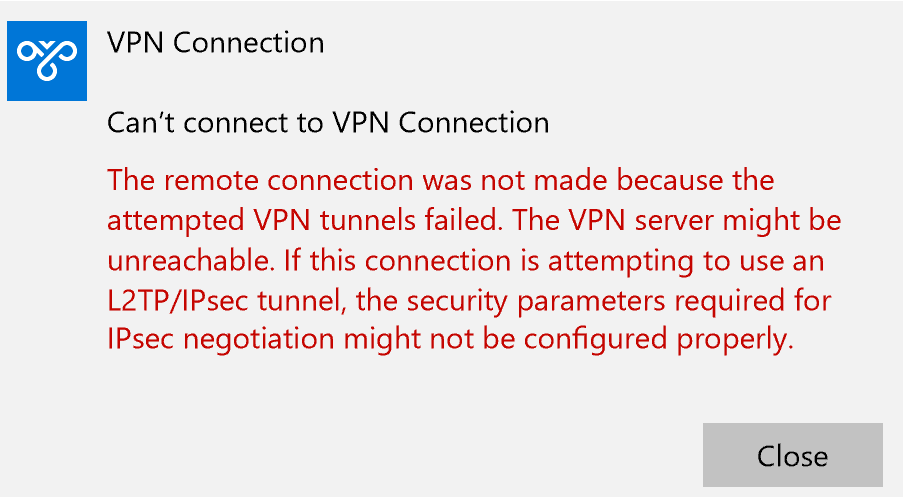Featured
Table of Contents
Forcepoint Vpn Client Connection Issues

The Routing and Remote Gain access to snap-in lives within the Microsoft Management Console, referred to as the MMC. There are numerous methods to access the MMC. You can pick the console from the Start menu's Programs choices, within the Administrative Tools folder within Windows server's Control Panel or by typing mmc at a command prompt.
As Tech, Republic's Brandon Vigliarolo shows within his video at the start of this short article, the Services console shows the status of the Routing and Remote Gain access to entry. From within the Services console and with the Routing and Remote Access entry highlighted, you can click Start the Service or right-click the entry and select Restart.
Sometimes the VPN client and VPN server are set to using various authentication approaches. Confirm whether an authentication mistake is the problem by opening the server console. Yet another approach of accessing the MMC is to type Control+R to open a command timely in which you can type mmc and hit Get in or click OK.
If the entry isn't present, click File, select Add/Remove Snap-in, select the Routing and Remote Access option from the choices and click Include, then OK. With the Routing and Remote Gain access to snap-in included, right-click on the VPN server and click Characteristics. Then, evaluate the Security tab to verify the authentication method.
Steps For A Better Vpn Rollout And Troubleshooting
Make sure the VPN customer is set to the authentication method specified within the Security tab. Normally the items just reviewed are accountable for most VPN connection refusal errors.
IP addresses are another essential component for which administration should be correctly set. Each Web-based VPN connection normally utilizes two different IP addresses for the VPN customer computer. The first IP address is the one that was assigned by the customer's ISP. This is the IP address that's utilized to develop the initial TCP/IP connection to the VPN server over the Internet.
This IP address normally has the very same subnet as the regional network and therefore allows the client to communicate with the local network. When you established the VPN server, you must set up a DHCP server to designate addresses to clients, or you can produce a bank of IP addresses to appoint to customers straight from the VPN server.


If this choice is picked and the efficient remote access policy is set to permit remote gain access to, the user will be able to connect to the VPN. I have actually been unable to re-create the scenario personally, I have actually heard rumors that a bug exists in older Windows servers that can trigger the connection to be accepted even if the reliable remote gain access to policy is set to deny a user's connection.
Troubleshooting Tough Vpn Problems - Strongvpn

Another common VPN problem is that a connection is effectively developed however the remote user is unable to access the network beyond the VPN server. By far, the most common cause of this problem is that consent hasn't been approved for the user to access the entire network. To allow a user to access the whole network, go to the Routing and Remote Gain access to console and right-click on the VPN server that's having the problem.
At the top of the IP tab is an Enable IP Routing check box. If this check box is enabled, VPN users will be able to access the rest of the network, presuming network firewall programs and security-as-a-service settings allow. If the checkbox is not chosen, these users will have the ability to gain access to just the VPN server, but absolutely nothing beyond.
If a user is dialing straight into the VPN server, it's generally best to set up a fixed route in between the client and the server. You can set up a fixed route by going to the Dial In tab of the user's homes sheet in Active Directory site Users and Computers and selecting the Apply A Static Path check box.
Click the Include Path button and then enter the location IP address and network mask in the area offered. The metric should be left at 1. If you're utilizing a DHCP server to assign IP addresses to customers, there are a number of other problems that might cause users not to be able to surpass the VPN server.
7 Common Vpn Problems And How To Fix Them (Tested ...
If the DHCP server appoints the user an IP address that is already in usage somewhere else on the network, Windows will spot the dispute and avoid the user from accessing the remainder of the network. Another common problem is the user not receiving an address at all. Many of the time, if the DHCP server can't appoint the user an IP address, the connection will not make it this far.
254.x. x range. If the client is appointed an address in a variety that's not present within the system's routing tables, the user will be unable to navigate the network beyond the VPN server. Other concerns can add to this problem, too. Make sure the resources the user is attempting to gain access to are actually on the network to which the user is connecting.
A VPN connection to the other subnet might, in truth, be needed. A firewall or security as a service solution could likewise be to blame, so do not forget to examine those services' settings, if such parts are present in between the VPN server and the resources the user seeks to reach.
The very first possibility is that a person or more of the routers involved is carrying out IP package filtering. IP packet filtering might prevent IP tunnel traffic. I advise examining the customer, the server and any machines in between for IP package filters. You can do this by clicking the Advanced button on each machine's TCP/IP Residences sheet, picking the Options tab from the Advanced TCP/IP Settings Characteristic sheet, picking TCP/IP Filtering and clicking the Residences button.
Latest Posts
Best Vpn Services Of 2023 - Security.org
What Is A Vpn Tunnel And How Does It Work?
The Best Vpn Services 2023